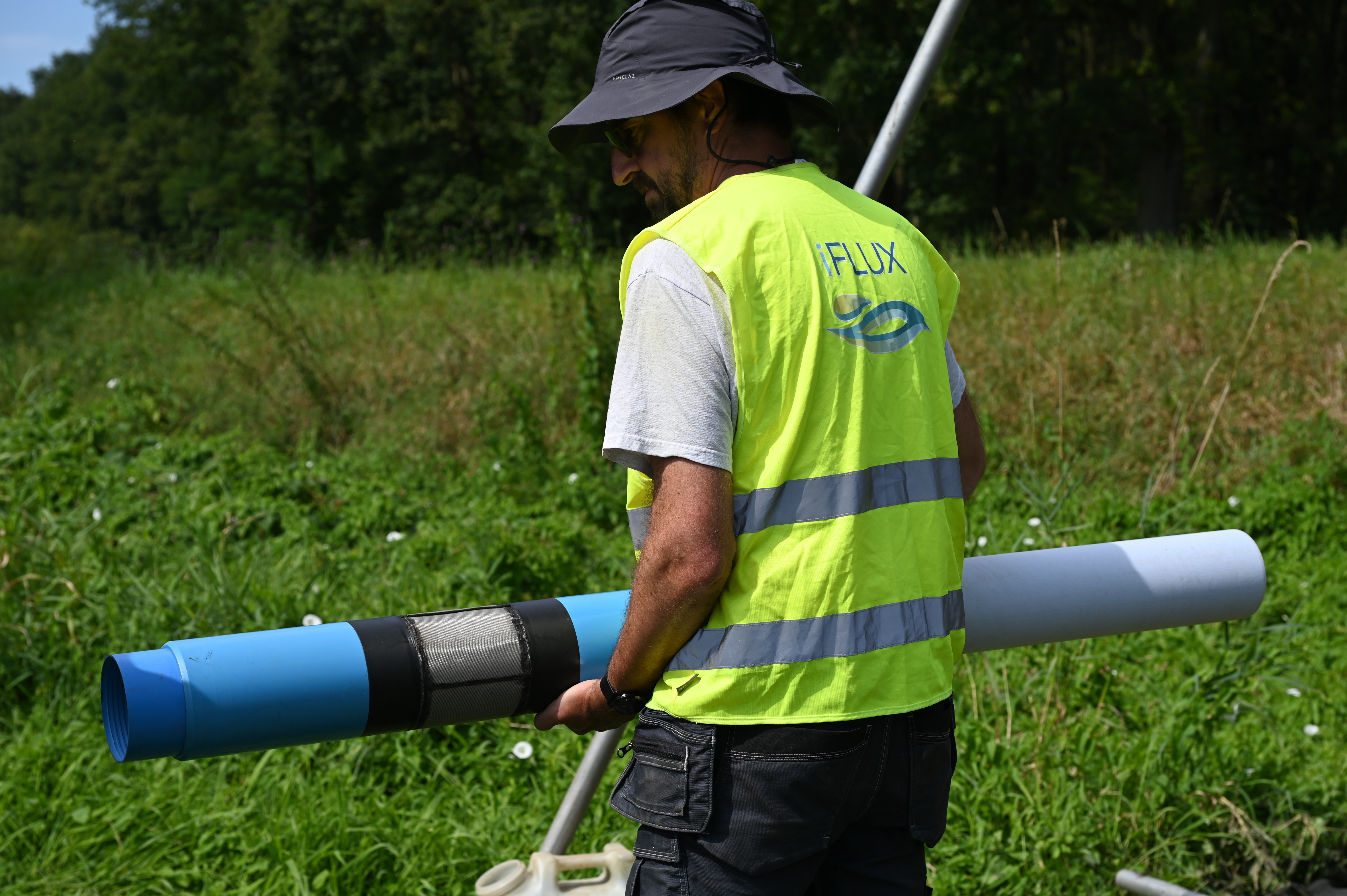Groundwater Flux Monitoring: The Missing Piece in Modern Drought Management
“With better measurement tools and a deeper understanding of groundwater flux, we can face drought challenges with greater resilience and foresight”,...
3 min read
Ellen Bogaert : Jun 11, 2025 11:13:10 AM
.jpg)
“With better measurement tools and a deeper understanding of groundwater flux, we can face drought challenges with greater resilience and foresight”, says Christian Montag, Managing Director iFLUX. Read how.
What exactly is iFLUX Sensing Solutions?
"Our system integrates different sensors to create a comprehensive real-time groundwater monitoring network. At its core is our patented flux sensor, which precisely measures both the orientation and velocity of groundwater flow.
We improve this data by combining it with readings from additional sensors and client-specific information to deliver a complete visualization of subsurface dynamics.
Essentially, we're digitalizing aquifers—transforming water-bearing geological layers into measurable, analyzable digital systems."
What unique measurements do you provide that others cannot?
"Our distinctive capability lies in providing a continuous live stream of subsurface conditions with integrated flux visualization. This means capturing both the orientation and velocity of groundwater flow. Traditional methodologies typically offer only periodic snapshots or theoretical estimates rather than continuous, real-time data."
Why is flux measurement so critical?
"Without flux data, it's difficult to understand contamination migration patterns or infiltrated water movement rates. Concentration measurements alone merely indicate quantity, but they fail to reveal origin, destination, or velocity. The integration of data creates actionable insights that are fundamental to effective risk management."
What technical advantages does your system offer?
"Our sensor is engineered within a specialized pre-pack filter that channels groundwater past the sensor in a precisely controlled manner. This design enables exceptional measurement accuracy, achieving directional precision within 7 degrees and magnitude ranges from less than a cm per day to several meters per day. We've also developed sensors specifically for vertical flux measurement, which is crucial for infiltration basins and riverbank monitoring applications. They’re designed to work in a crucial zone of the water cycle, the complex surface water-groundwater interaction zone. The entire system connects to a sophisticated telemetric platform, delivering real-time data accessibility."
Which additional sensors can be integrated into your system?
"We've designed an open architecture platform capable of accommodating virtually any sensor type, including:
Beyond these, we incorporate public meteorological data and client-specific operational information such as pumping metrics. This comprehensive integration enables clear visualization of cause-and-effect relationships within groundwater systems."

Our distinctive capability lies in providing a continuous live stream of subsurface conditions with integrated flux visualization.
How do you ensure data integrity and quality?
"Our approach combines advanced algorithms and anomaly detection systems like Timeseer.io with expert human oversight and analysis.
Data quality assurance is deeply woven into our organizational culture. We prominently display quality dashboards throughout our facilities—even beside the coffee machine—ensuring continuous monitoring by all team members. This responsibility extends beyond our data team; every employee is personally invested in maintaining the reliability of our deliverables."
What are the primary applications for this technology?
"We've strategically identified two key market segments for iFLUX Sensing Solutions. The first is the drinking water industry, where providers need to safeguard their groundwater resources as essential raw materials. Pidpa serves as an excellent example—they extract groundwater near the Grote Nete River while positioned between potentially compromised surface water and an ecologically sensitive nature reserve. Our real-time monitoring verifies the effectiveness of their protective screen wells while confirming they maintain zero negative environmental impact.
The second market encompasses industrial sites with contamination concerns. These facilities need to prevent historical pollutants from migrating beyond their property boundaries. Our monitoring systems track conditions at these perimeter points continuously.
The real value emerges when clients leverage this data for operational decision-making—enabling adjustments, optimizations, and risk management processes. In scenarios requiring responsive action—involving pumps, weirs, or containment barriers—these real-time insights become invaluable."
How does your approach complement groundwater modeling?
"We don't replace modeling—we enhance it. Models operate through scenarios and projections, while our data reveals actual subsurface conditions and behaviors. This becomes especially crucial when dealing with climate change effects or complex geological formations. Consider groundwater residence time calculations: when water is infiltrated, determining when it becomes safe for extraction requires a precise understanding of movement patterns. Flux data makes these patterns visible and quantifiable."
What limitations should potential users understand?
"Our sensor technology performs optimally in unconsolidated layers such as sand, loam, or peat formations—not in limestone or bedrock environments. Installation is customized to site conditions, sometimes extending to depths of 50 meters, requiring specialized drilling techniques. This isn't a simple 'plug-and-play' solution but a sophisticated monitoring system designed for organizations committed to the digitalization of their aquifer."
What is your international expansion strategy?
"Our growth model emphasizes international expansion through strategic local partnerships. For installation, maintenance, and consultancy services, we seek partners with a profound understanding of regional contexts and conditions. We provide the core technology—sensors, platform architecture, and data quality assurance—while our partners facilitate local implementation and support."
Why should potential clients invest in iFLUX technology?
"The compelling reason is actionable groundwater dynamics intelligence. There's limited value in measurement solely for measurement's sake. However, when organizations need to manage environmental risks or optimize operational controls—such as pumping systems, water control structures, or dewatering operations—understanding real-time effects becomes essential. Our technology provides precisely this critical insight."
Christian Montag showing iFLUX Sensing Solutions

“With better measurement tools and a deeper understanding of groundwater flux, we can face drought challenges with greater resilience and foresight”,...

“With better measurement tools and a deeper understanding of groundwater flux, we can face drought challenges with greater resilience and foresight”,...

The promising collaboration that began in December 2023 between Belgian drinking water provider Pidpa and groundwater monitoring specialist iFLUX is...